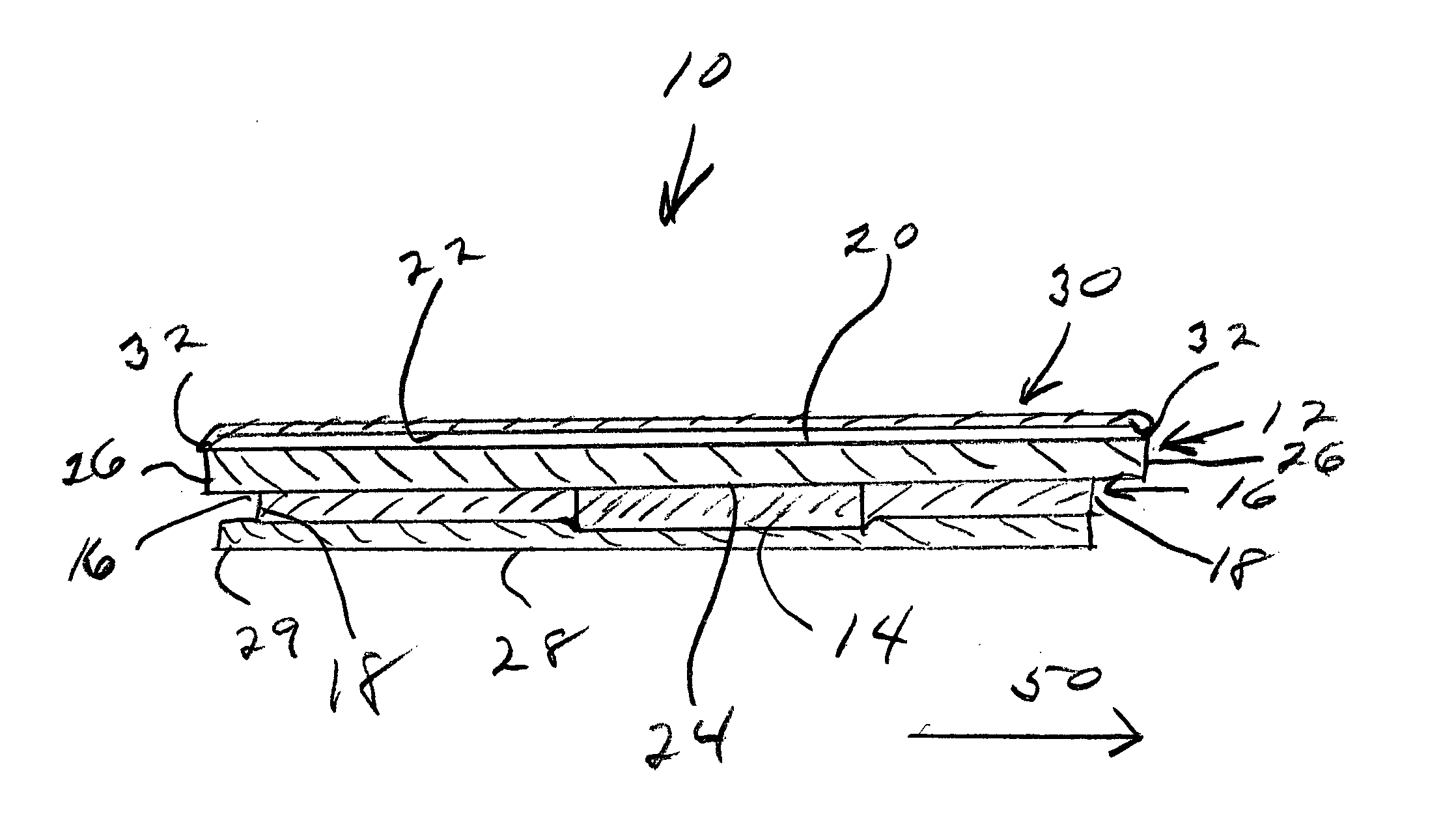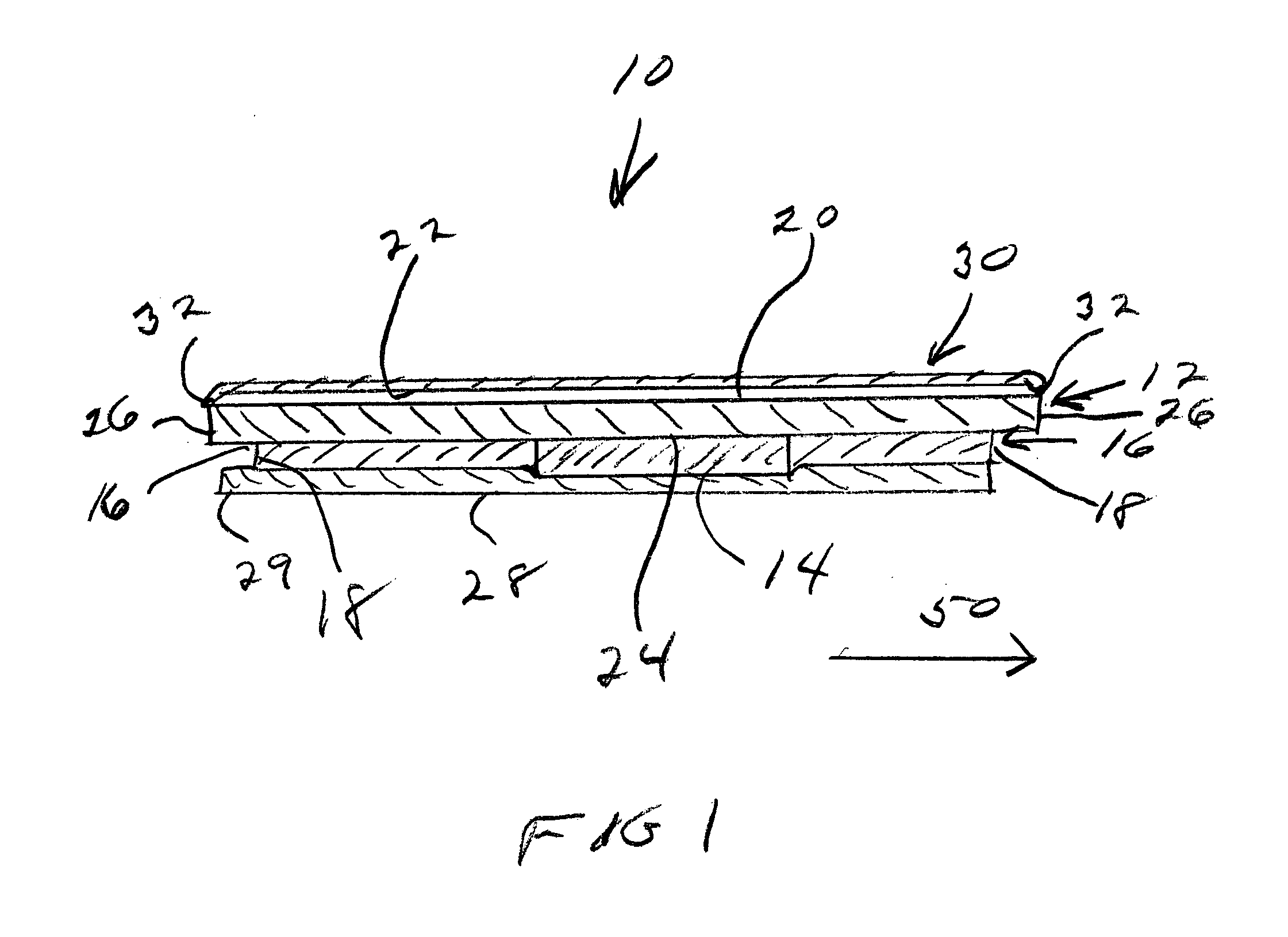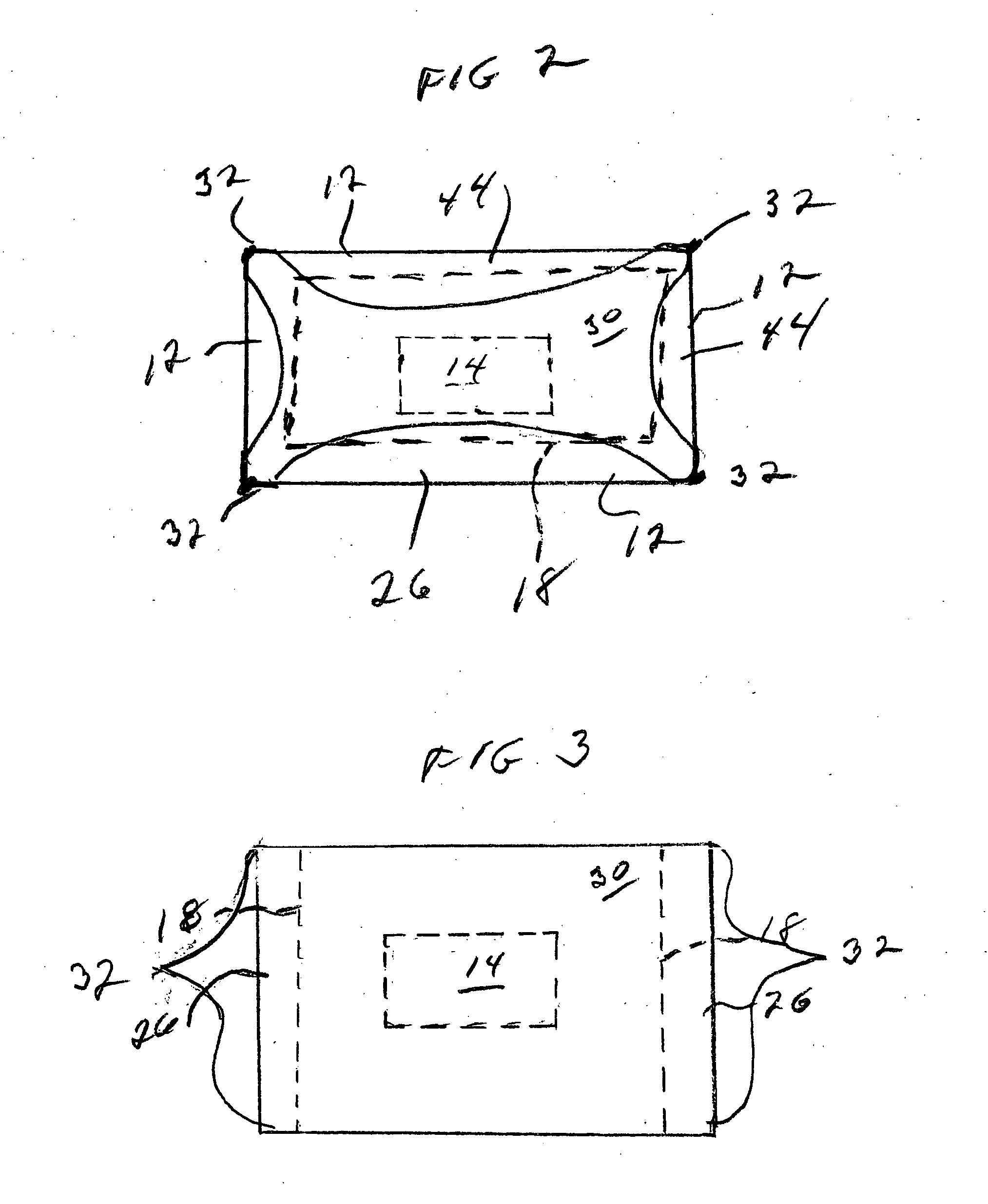Adhesive bandage for protection of skin surfaces
- Summary
- Abstract
- Description
- Claims
- Application Information
AI Technical Summary
Benefits of technology
Problems solved by technology
Method used
Image
Examples
Embodiment Construction
[0021] In one aspect, the present invention relates to an adhesive bandage structure which serves both to protect existing wounds or blisters from damage caused by frictional forces, and to prevent blisters or wounds from forming due to the action of frictional forces on exposed skin. Such a bandage structure may be used with patients suffering from second-degree burns, such as those which result from scalding water or gas, or patients suffering from infection-related blisters, or simply patients having blisters or wounds resulting from friction on the skin such as those caused by shoes and the like. In addition, such a bandage structure may be used proactively to prevent the formation of blisters or wounds that are caused by friction forces acting on the skin.
[0022] In one embodiment, the bandage structure of the present invention includes a substrate or a layer or sheet of material which has a layer of gauze or other like protective material attached to one side. A layer of a pre...
PUM
 Login to View More
Login to View More Abstract
Description
Claims
Application Information
 Login to View More
Login to View More - R&D
- Intellectual Property
- Life Sciences
- Materials
- Tech Scout
- Unparalleled Data Quality
- Higher Quality Content
- 60% Fewer Hallucinations
Browse by: Latest US Patents, China's latest patents, Technical Efficacy Thesaurus, Application Domain, Technology Topic, Popular Technical Reports.
© 2025 PatSnap. All rights reserved.Legal|Privacy policy|Modern Slavery Act Transparency Statement|Sitemap|About US| Contact US: help@patsnap.com



